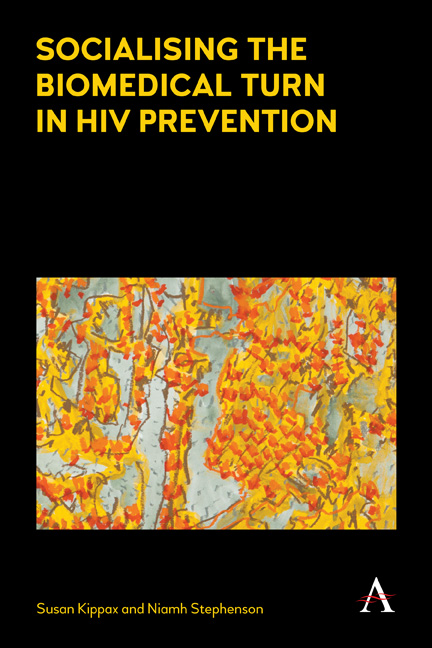3 - The Australian Partnership
from Part I - EFFECTIVE HIV PREVENTION
Published online by Cambridge University Press: 17 June 2017
Summary
We now turn to a very different country, Australia. Although a country with a quite dissimilar epidemic, it also initially responded successfully to the threat of HIV via what Low-Beer and Stoneburner refer to as a ‘social vaccine’. However, as in Uganda, there has been a recent increase in HIV incidence, and in this chapter we seek an answer to the question, Why? This chapter traces ‘three moments’ in the Australian epidemic: the early years, 1983– 1997; the years that followed the advent of successful treatments (ART) in 1996 (1998–2009); and the turn to treatment for prevention after 2009.
The epidemic was and continues to be very different from what we have described as occurring in Uganda: Australia's is a ‘concentrated’ epidemic that affects gay and homosexually active men. Although sex workers, people who inject drugs and the general population are also at risk of HIV, transmission has been minimal in these populations as compared with the gay and homosexually active population, as shown in Figure 3.1 below.
The spread of HIV among people who inject drugs was curtailed by quick action (Madden & Wodak, 2014), and transmission among the heterosexual population was minimised by the responses of sex workers (Bates & Berg, 2014), school authorities (Jones & Mitchell, 2014), Indigenous Australians (Ward et al., 2014) and the Australian national and state governments (Persson et al., 2014). The relatively sustained success of these Australian HIVprevention efforts can be attributed to a wide range of actions by communities and networks supported by government. A detailed account of these responses is given by Mindel & Kippax (2013) and in a special issue of AIDS Education & Prevention edited by Aggleton & Kippax (2014).
As shown in Figure 3.1, HIV incidence in Australia peaked among gay and other homosexually active men (men who have sex with men, MSM) in 1987– 1988, then declined rapidly until 1997–1998 and then increased with some fluctuations, including a large increase post-2011. In other populations, HIV incidence peaked in about 1994–1995 and then also rapidly declined until 1998. Since that time there have been small fluctuations, but there has been no substantial increase of HIV transmission among Indigenous Australians, people who inject drugs or sex workers and their clients.
- Type
- Chapter
- Information
- Socialising the Biomedical Turn in HIV Prevention , pp. 47 - 66Publisher: Anthem PressPrint publication year: 2016



